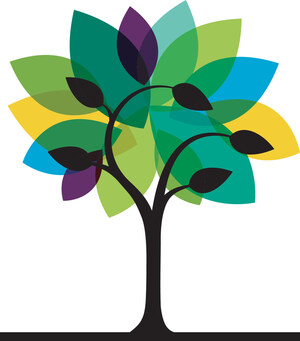Study finds Carnegie Unit plays valuable role in education as administrative currency and opportunity-to-learn standard, but is miscast as a measure of student learning
Carnegie Foundation supports testing of new standards, assessments, and accountability models to increase transparency and flexibility in education
WASHINGTON, Jan. 29, 2015 /PRNewswire/ -- Today, the Carnegie Foundation for the Advancement of Teaching released the results of its two-year study of the influential, century-old Carnegie Unit and its impact on education reform in K-12 and higher education.
The study's conclusion: The Carnegie Unit is the central organizing feature of the vast American education system, from elementary school to graduate school, and provides students with an important opportunity-to-learn standard. But at best, the Carnegie Unit is a crude proxy for student learning. The U.S. education system needs more informative measures of student performance. Achieving this goal would require the development of rigorous standards, assessments, and accountability systems—difficult work, especially in the field of higher education, where educational aims are highly varied and faculty autonomy is deeply engrained.
The study, "The Carnegie Unit: A Century-Old Standard in a Changing Education Landscape," authored by Carnegie Foundation's Elena Silva, Thomas Toch, and Taylor White, describes how the Carnegie Unit's time-based standard of student progress came to define the design and delivery of American education. While the Carnegie Unit (also known as the credit hour) helped to organize a rapidly expanding and increasingly complex system of educational institutions, many now say it is an impediment to making student performance more transparent, improving instruction, and increasing schools' and colleges' accountability for student learning. It is also sometimes viewed as a barrier to innovating with more flexible educational designs that might better address students' varied learning needs and make education more accessible and affordable.
Developed by the Carnegie Foundation in 1905 as a rough gauge of student readiness for college, the Carnegie Unit was originally designed as a standard for student exposure to subject matter. One Carnegie Unit was the equivalent of learning a subject for one hour a day, five days a week, for 24 weeks. In essence, it was an opportunity-to-learn standard—assuring that students received at least some common base of academic study in the high school and postsecondary systems that were emerging early in the 20th century. Today the Carnegie Unit functions as a currency that organizes a vast array of educational transactions: everything from academic calendars to faculty workloads and compensation, transfer and graduation requirements, athletic eligibility, and the distribution of billions of dollars in federal financial aid.
"The Carnegie Unit was never intended to measure what students have learned," says Silva, a Carnegie Foundation senior associate. "Measuring learning was left to the discretion of individual teachers and professors. Given the great diversity in goals and activities in the U.S. educational system and the autonomy enjoyed by faculty, particularly in higher education, creating an alternative to the Carnegie Unit poses formidable challenges. While the Carnegie Unit has many limitations, it does provide a minimum guarantee of student access to opportunities to learn."
The report draws on historical research, interviews with dozens of experts in K-12 and higher education, and extensive study of emerging alternatives to the Carnegie Unit in the United States and abroad. These alternatives include competency-based education models that permit students to progress when they demonstrate mastery of the subjects they're studying, rather than after a fixed amount of instructional time as required under Carnegie Unit systems.
"There's a tremendous need to make the performance of America's schools and colleges more transparent and to develop new, more flexible delivery models," says Toch, a Carnegie Foundation senior partner. "But the spread of competency models and other innovations doesn't guarantee greater student learning absent rigorous standards and assessments."
The report concludes that while the Carnegie Unit is not a prohibitive barrier to innovation, "the most important step educators and education policymakers should take toward making American education more transparent and flexible is systematically testing new learning standards, high quality assessments, and accountability models that focus great attention on student learning." The report also notes that achieving these ends would require a great deal of very difficult work in design, development, testing, and improvement to build quality standards and assessments and to secure agreements about their use. The report also recognizes the likely pitfalls and false starts that may occur in seeking to transform seemingly compelling ideas about innovative designs that promise greater flexibility for student learning into working systems that produce rigorous learning outcomes reliably at scale. Put simply, many promising change ideas fail to result in measureable improvements.
In response, the Carnegie Foundation has been developing methods for institutions to work together to build solutions to common challenges, using techniques from the field of improvement science to guide the work of these networked improvement communities.
"The Carnegie Foundation is committed to making American education more effective, more equitable, and more efficient," says Carnegie Foundation President Anthony S. Bryk. "It stands ready to help educators at all levels of the system study the best ways to achieve that end—as a national convener, a leader of improvement coalitions, and a provider of technical assistance to networks of institutions and organizations testing solutions to the major challenges outlined in this report."
The report can be downloaded at http://www.carnegiefoundation.org/resources/publications/carnegie-unit/.
Taylor White is now deputy director of education policy and university research at the Embassy of Australia in Washington, D.C.
About the Carnegie Foundation for the Advancement of Teaching
The Carnegie Foundation for the Advancement of Teaching is committed to developing networks of ideas, individuals and institutions to advance teaching and learning. We bring together scholars, practitioners and designers in new ways to solve problems of educational practice. Toward this end, we work to integrate the discipline of improvement science into education with the goal of building the field's capacity to improve.
SOURCE Carnegie Foundation for the Advancement of Teaching
WANT YOUR COMPANY'S NEWS FEATURED ON PRNEWSWIRE.COM?
Newsrooms &
Influencers
Digital Media
Outlets
Journalists
Opted In





Share this article